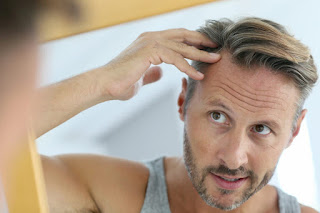Post-SMP Lifestyle: Activities to Avoid for Best Results
Scalp micropigmentation (SMP) has revolutionized the way we address hair loss, providing a viable and effective solution for both men and women. This innovative technique involves the application of specialized pigments to the scalp, creating the illusion of hair follicles and enhancing the overall appearance of thinning hair. As a non-invasive procedure, SMP is quickly becoming a popular choice for individuals seeking a long-lasting and natural-looking alternative to traditional hair restoration methods.
Understanding Scalp Micropigmentation
Scalp Micropigmentation in Dubai is essentially a form of cosmetic tattooing that simulates the look of hair follicles on the scalp. By using advanced techniques and high-quality pigments, practitioners can create a realistic effect that blends seamlessly with existing hair. The procedure is suitable for a wide range of hair loss conditions, including male and female pattern baldness, alopecia, and thinning hair caused by various factors.
The SMP process begins with an initial consultation where the practitioner assesses the client’s scalp and discusses the desired outcome. This collaborative approach allows for the creation of a customized treatment plan tailored to the client’s unique needs. The application process typically involves several sessions, during which pigments are meticulously applied in small, dot-like patterns to replicate the appearance of natural hair growth.
The SMP Experience: What to Expect
When undergoing scalp micropigmentation, clients can expect a comfortable and professional experience. The procedure generally lasts a few hours, depending on the extent of coverage required. During the session, a specialized machine and needles are used to deposit the pigment into the scalp. Most practitioners use numbing agents to minimize discomfort, ensuring that clients feel at ease throughout the process.
After the initial sessions, clients will notice an immediate improvement in the appearance of their scalp. Over the following weeks, the pigments settle into the skin, enhancing the overall effect. Clients are encouraged to return for touch-up sessions as needed, which help maintain the desired look and ensure that the pigments continue to appear natural.
Post-SMP Lifestyle: Activities to Avoid for Best Results
To ensure optimal results from scalp micropigmentation, clients need to adopt specific lifestyle practices post-treatment. Certain activities can impact the healing process and the longevity of the pigment, so being mindful of these factors is crucial. Here are key activities to avoid after your SMP procedure:
1. Sun Exposure
Direct sunlight can significantly affect the appearance of your scalp after SMP. The UV rays can cause the pigment to fade and may lead to irritation. For at least four weeks following the treatment, it’s advisable to avoid prolonged sun exposure. If you must be outdoors, wearing a hat or using a scalp sunscreen can help protect your skin.
2. Excessive Sweating
Engaging in activities that induce heavy sweating, such as intense workouts or vigorous sports, should be avoided for the first week after your SMP session. Sweat can irritate the scalp and interfere with the healing process. If you’re an avid gym-goer, consider switching to lighter exercises during this recovery period.
3. Swimming
Both swimming in pools and natural bodies of water can pose risks to your scalp after SMP. Chlorine and saltwater can irritate the skin and affect the quality of the pigment. It’s recommended to wait at least two weeks before resuming swimming activities to allow your scalp to heal properly.
4. Hot Showers and Saunas
Hot showers, saunas, and steam rooms can lead to increased blood flow and sweating, which may irritate the scalp post-treatment. It’s best to stick to lukewarm water and avoid these environments for a few weeks. This will help minimize any potential complications during the healing process.
5. Harsh Hair Products
Following your SMP session, it’s essential to avoid using harsh shampoos, conditioners, or styling products that contain alcohol or strong chemicals. These substances can irritate the scalp and affect the longevity of the pigment. Opt for gentle, sulfate-free products until your scalp has fully healed.
6. Scratching or Picking at the Scalp
After SMP, clients may experience some itching or flaking as the scalp heals. However, it’s crucial to resist the urge to scratch or pick at the area. Doing so can lead to irritation, infection, or even changes in how the pigment settles into the skin. If itching becomes bothersome, consult your practitioner for advice on appropriate aftercare.
7. Shaving the Scalp
If you normally shave your head, it’s best to refrain from doing so for at least a week following your SMP treatment. The healing process requires time, and shaving too soon can disrupt the pigment and lead to complications. Discuss with your practitioner when it will be safe to resume shaving.
8. Color Treatments and Hair Dyes
If you regularly use hair dye or other color treatments, it’s important to avoid these products for at least a month post-SMP. The chemicals in hair dyes can interact with the pigment and affect its longevity, resulting in an uneven appearance. Consult your practitioner for guidance on when it’s safe to resume color treatments.
Conclusion
Scalp micropigmentation offers a revolutionary approach to managing hair loss, providing individuals with a natural-looking and effective solution. Understanding the importance of post-treatment care is essential for achieving the best results. By avoiding certain activities and following your practitioner’s aftercare instructions, you can ensure that your SMP treatment remains vibrant and effective for years to come. With proper care, scalp micropigmentation can transform your appearance and restore your confidence, allowing you to embrace life fully.



Comments
Post a Comment